I didn’t know much about Syrian cuisine until about a month ago when we decided to host our #CookForSyria dinner. And I definitely didn’t realize how cooking and sharing their food would give me such an innate sense of community.
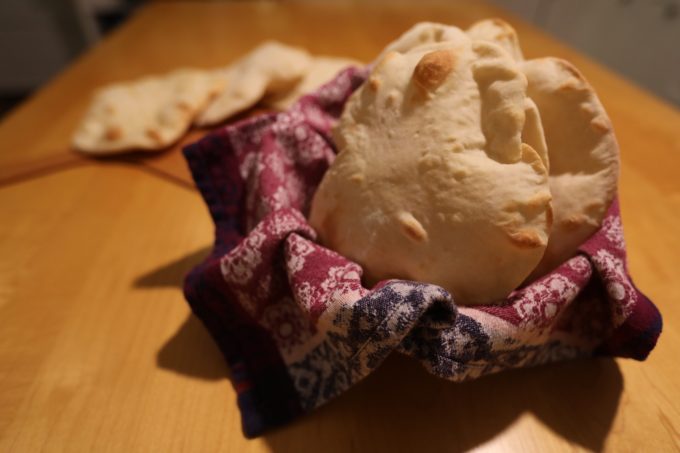
While the rest of the crew was rolling falafels balls, mandolining thousands of root vegetables for a slaw and grilling dozens of red peppers for muhammara, I was tasked with making one of the most important components of the menu: the pita. It was also perhaps the least exotic or hard-to-pronounce item on the menu (still trying to figure out how to pronounce mejadra), second only to hummus. Indeed, pita has become a household staple in the U.S. and you don’t need to have any knowledge of what’s happening in the Middle East to get your hands on some. It’s stocked at every grocery store and bodega nationwide.
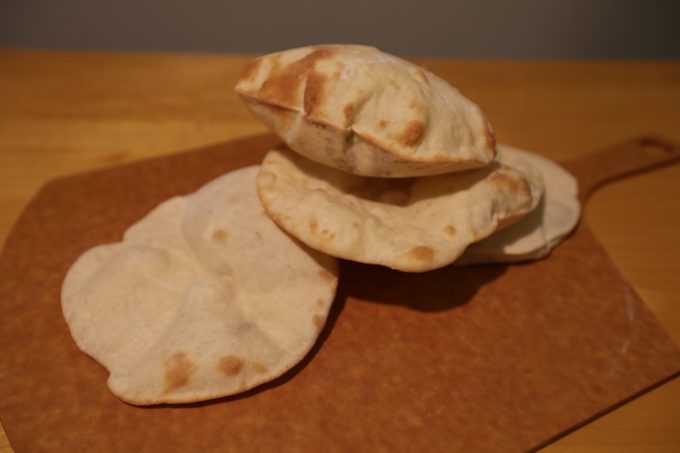
In Syria, pita is even more common but it’s not something you just add to your grocery list. It’s most often kneaded by hand from fermented dough and baked over a fire-pit in the backyard. In our attempt at authenticity, we insisted that ours be homemade too. Even with a commercial grade oven and food processor, turning out 100+ pitas was far from easy.
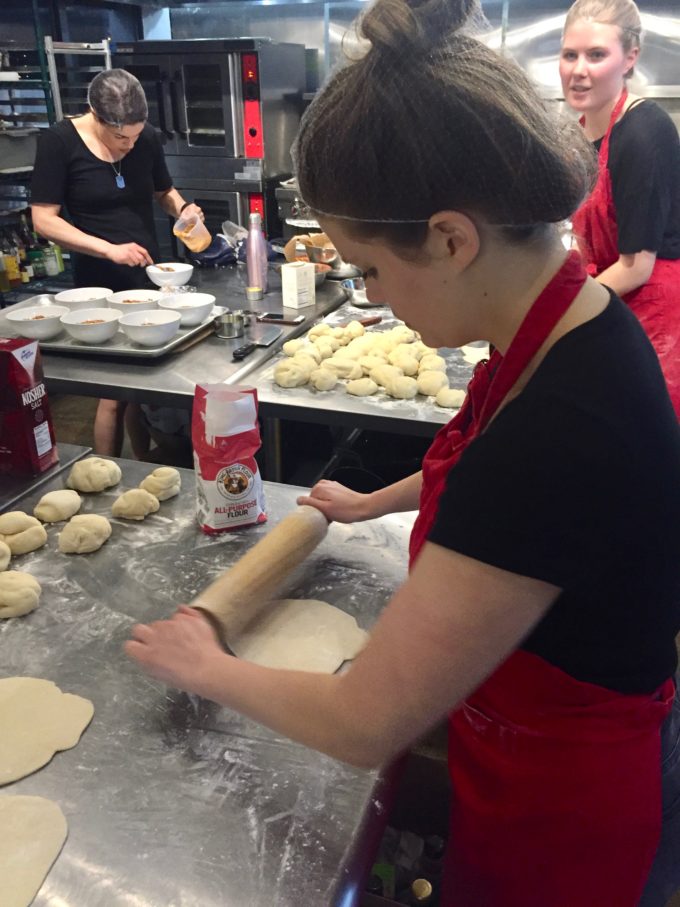
With tables set and guests buzzing, I was still zipping across the kitchen with dough and flour on every surface, including myself. The perfect assembly line I’d envisioned was well out the window. Lucky for me, our guests were distracted with drinks and nibbles so this controlled chaos wasn’t on full display. It wasn’t until I finally sat down (and took a much needed breath) that I realized how extraordinary the pita I worked so hard to make really was.
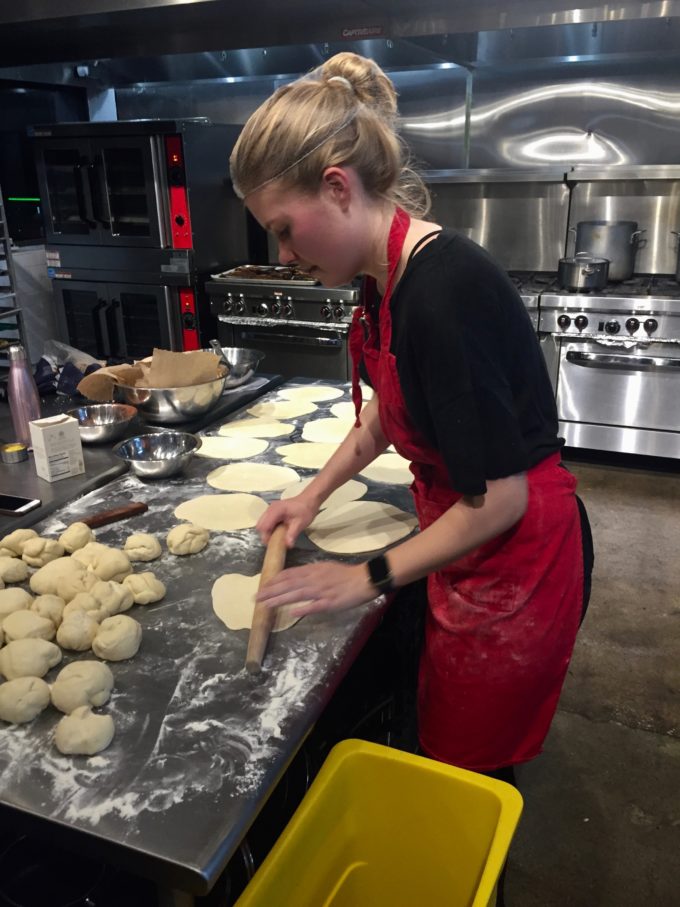
My plate resembled a painting of dolloped dips and spoonfuls of slaw. My pita was the brush stroke that drew it all together. I was literally sitting, staring at my plate thinking, Wow, this dish is the ultimate symbol of chaos, harmony and humility all wrapped up in a pita. My humble pita was nothing more than a vehicle to bring flavors together, however it feels like there’s an overarching metaphor at play here too. For most of us, including those that attended our #CookForSyria dinner, it’s hard to imagine a life wrought by distress, violence and injustice, but that’s the reality that Syrian refugees and displaced citizens face almost every day. Bringing people together was not only meant to raise money and try Syrian cuisine, it was about creating a space for cultures to collide and appreciation and compassion to ruminate. When the dinner was all said and done, that was the most magic element I felt in the room and on the plate.
With Love,
Charlotte
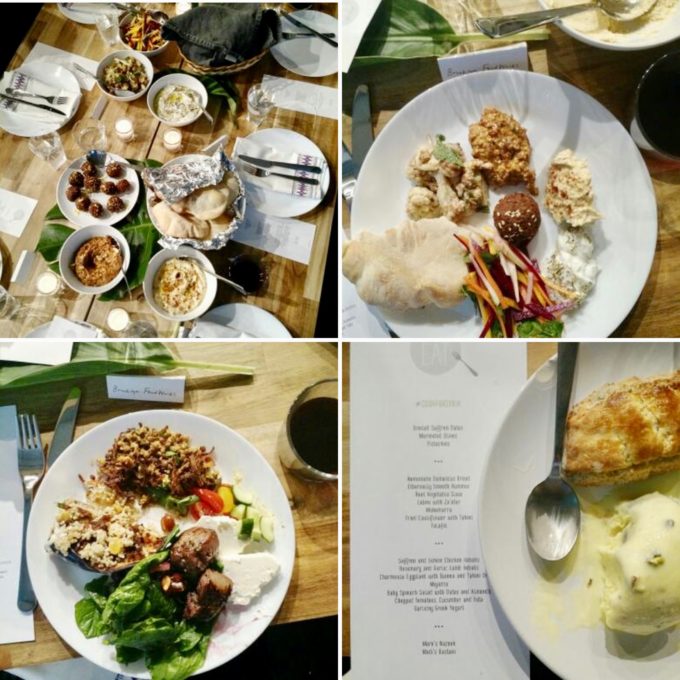
Syrian Pita Bread Recipe (from Food & Wine with my own added instructions):
Makes about 16 pitas
Ingredients:
- 3/4 cup warm water
- 1 1/2 envelopes (3 3/8 teaspoons) active dry yeast
- 6 cups bread flour
- 1 1/2 teaspoons salt
- 1 1/2 cups warm milk
- Extra-virgin olive oil, for the bowl
Method:
Set a pizza stone (or an upside-down sheet tray) on the bottom rack of the oven and preheat the oven to 500 degrees or as high as it will go.
In a bowl, combine the warm water and yeast and let stand until foamy, about 10 minutes.
Meanwhile, in a food processor, pulse flour and salt until combined.
With the machine on, pour in the yeast mixture and then the warm milk and process until the dough forms a ball. Turn the dough out onto a lightly floured work surface and knead it a few times. Form the dough into a ball.
Pour about ¼ tsp. oil into a large bowl and transfer the dough to the bowl and turn to coat. Tightly cover the bowl with plastic wrap and let the dough rise in a warm place until doubled in size, about 1 hour. You can also do this step ahead of time and allow the dough to rise halfway and then move it to the refrigerator to slow the rising process down up to 12 hours or overnight! An hour before it’s time to bake, take the dough out to come to room temperature and continue to rise completely.
Lightly dust a work surface with flour. Punch down the dough and cut it in half. Cut each half into 8 pieces and roll them into balls, then flatten into 6-inch rounds. Arrange the rounds on the work surface. Let rise until puffy, 25 minutes.
Using a lightly floured pizza peel, slide 4 of the rounds onto the hot pizza stone or baking sheet at a time and bake for about 5 minutes, until the pitas puff up. Each oven is different so times may vary. (With the oven we used, it only took a minute or two.) Keep an eye on the pitas and take them out the moment they puff up and barely begin to brown. Serve hot or wrap in foil to keep warm.